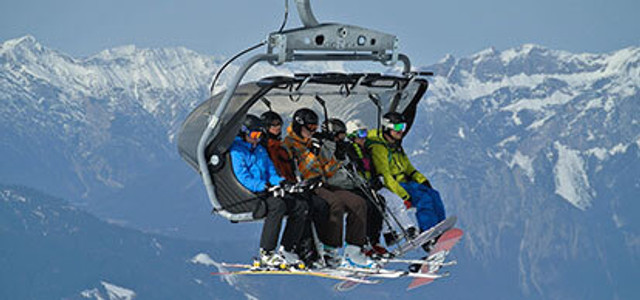Types of Ski Equipment
Posted by Peter Glenn Staff on Jul 23rd 2025
Ski Equipment: What You Need Before Hitting the Slopes
Whether you're gearing up for your very first ski trip or fine-tuning your setup for another winter season, understanding the different types of ski equipment is essential. The right gear not only helps improve your performance but also enhances safety, comfort, and overall enjoyment on the mountain. In this blog, we’ll walk you through the essential ski equipment, breaking it down by skill level and function so you can make smart choices when assembling your perfect setup.
Skis
Skis are the foundation of your setup, and choosing the right pair can make a big difference. Beginners should look for skis that are soft, short, and lightweight—easier to control and more forgiving. As you improve, upgrade to all-mountain skis with better edge grip and responsiveness for varied conditions. Advanced skiers may prefer stiff, specialized skis for high speeds, powder, or terrain parks. Many beginner and intermediate skis are sold as ski systems, which include bindings. These systems offer convenience, compatibility, and better value.
Ski Boots
Boots are your direct link to your skis and arguably the most important gear. Beginners need soft, forgiving boots that are easy to put on and take off. Intermediate boots offer a balance of comfort and control, often with customizable features. Advanced boots have stiff flex ratings for powerful, precise performance. Always get professionally fitted—ill-fitting boots can ruin your day.
Bindings
Bindings hold your boots in place and release them safely during falls. They’re set using DIN settings, which depend on your weight, height, and skill level. A certified ski tech can help you find the correct setting for safety and performance.
Ski Poles
Poles help with rhythm, balance, and turning. Beginners should go for affordable aluminum poles, while advanced skiers may prefer lightweight carbon or composite options. Make sure the poles are the right length—your forearm should be parallel to the ground when holding them upside down.
Helmets & Goggles
Helmets are now standard and offer vital protection, often with features like MIPS® technology, adjustable vents, and dialed-in fit systems. Goggles are just as important—look for anti-fog lenses and a helmet-compatible fit. Lens tints should match the weather: rose or amber for cloudy days, dark or mirrored for sunny ones. Interchangeable lenses offer great versatility.
Clothing
While not equipment in the strictest sense, proper ski clothing is essential for comfort and performance on the mountain. Start with moisture-wicking baselayers to keep sweat off your skin, followed by a warm mid-layer like fleece or light insulation. Your outer layer should include a waterproof, breathable ski jacket and ski pants to protect against snow, wind, and changing weather conditions. Don’t overlook accessories—ski gloves or ski mitts are crucial for keeping your hands warm and dry, while well-fitted, moisture-wicking ski socks help regulate temperature and prevent blisters. Layering properly and choosing the right gear ensures you stay warm, dry, and comfortable all day on the slopes.
Final Thoughts to Gear Up for Success
Whether you’re gliding down the bunny slopes or chasing powder on expert trails, having the right ski equipment makes a big difference. Proper gear supports your performance, enhances your safety, and ensures that every day on the mountain is a good one.
Need help choosing the right gear? Visit any of our Peter Glenn Locations, and our experienced staff will help you find the best fit for your skill level, budget, and skiing goals. From first-time skiers to seasoned pros, we’ve got you covered.
See you on the slopes!



